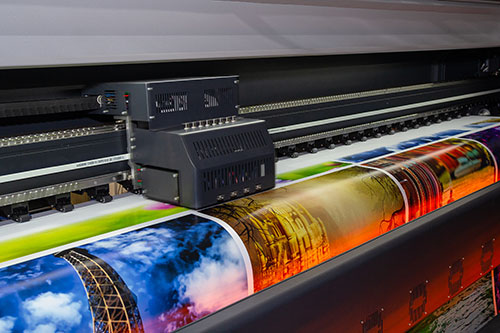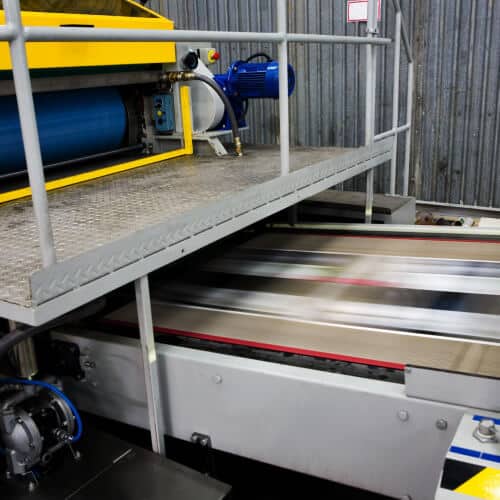The Necessary Overview to Understanding Litho Printing and Its Applications
Litho printing stands as a substantial method in the printing market, rooted in the concepts of oil and water repulsion. This strategy not just delivers premium photos but also deals with different business needs. Its applications range from advertising materials to product packaging, showcasing its convenience. As the sector adapts to new technologies, the evolution of litho printing increases concerns regarding its future and importance in an electronic landscape. What exists in advance for this sustaining approach?

What Is Litho Printing?
Litho printing, a widely used printing technique, depends on the principle of oil and water repulsion. This method employs a level printing surface area, commonly a steel plate, which is dealt with to ensure that the picture areas are receptive to oil-based inks while the non-image areas repel them. The procedure starts with the development of a picture on the plate, frequently via illustration or photo ways. Once the image is prepared, home plate is wetted with water, complied with by the application of ink. The ink adheres only to the photo locations, allowing for specific reproduction of graphics and text. Litho printing is favored for its ability to produce top quality prints with great detail and lively colors. It is generally utilized in commercial applications, including papers, publications, and product packaging, showcasing its convenience and performance in satisfying the needs of modern printing.
The Background of Lithography
Although lithography is a modern-day printing staple, its origins map back to the late 18th century when German playwright Alois Senefelder designed the method in 1796. At first developed as an approach for recreating messages and pictures, lithography made use of a flat rock surface to produce prints with a chemical procedure. Senefelder's advancement permitted higher adaptability and creative expression contrasted to previous printing methods.By the 19th century, lithography gained extensive approval, becoming a prominent choice among musicians and authors. It enabled the mass manufacturing of images, maps, and posters, notably affecting the printing sector. The technique even more advanced with the introduction of lithographic presses, improving effectiveness and quality.As the commercial revolution progressed, lithography adapted to satisfy the needs of business printing, leading the way for contemporary applications. Today, it continues to be a vital strategy in numerous sectors, including publishing, packaging, and fine art recreation.
Exactly How Litho Printing Functions
A key feature of litho printing is its reliance on the principle of oil and water repulsion - litho printing. In this process, images are transferred from a flat surface, usually a steel or polymer plate, to paper. The plate is dealt with to ensure that the locations meant for printing draw in ink, while the non-image locations repel it because of their fondness for water. The printing begins by moistening the plate with water, which abides by the non-image locations. Subsequently, an oil-based ink is used, sticking just to the desired photo areas.When home plate comes right into contact with the substrate, the ink is transferred, creating a print. The litho printing procedure is qualified of generating high-quality photos with great information. It is commonly utilized for automation due to its efficiency and uniformity, making it a recommended approach for industrial printing applications
Advantages of Litho Printing
One noteworthy benefit of litho printing is its capacity to produce high-quality photos regularly, making it a perfect selection for industrial projects. This printing approach uses a level printing plate, making sure even ink circulation and sharp information. Litho printing is likewise renowned for its shade accuracy, enabling lively and true-to-life reproductions, which is necessary for branding materials.Moreover, it supports a wide range of substratums, consisting of paper, cardboard, and even particular plastics, enhancing its adaptability. The process is economical for large runs, as economic climates of range decrease per-unit prices. On top of that, litho printing has a quick turn-around time, permitting reliable production schedules.Its longevity also indicates that published materials withstand fading, making certain that the end product preserves its aesthetic appeal gradually. On the whole, these advantages make litho printing a favored selection throughout various markets, adding to its long-lasting appeal.
Applications of Litho Printing in Company
As services significantly look for dependable and premium printing remedies, litho printing arises as a principal in various applications. This method is especially preferred for generating advertising and marketing products such as sales brochures, leaflets, and catalogs, thanks to its ability to deliver vivid shades and sharp pictures. Additionally, litho printing is frequently used for product packaging remedies, allowing firms to create captivating tags and boxes that improve product appeal.In the industry of business identity, litho printing contributes in producing professional stationery, calling card, and promotional goods, which aid enhance brand name recognition. Furthermore, read this post here it is widely used in the posting market for printed materials such as publications and publications, where constant quality is paramount. On the whole, litho printing's convenience and effectiveness make it a vital tool for organizations aiming to communicate properly and establish a solid market existence.
Artistic Uses of Litho Printing
Litho printing offers as a flexible tool in the domain name of printmaking, offering artists a special technique to share their imagination. This technique permits a broad array of creative applications, from typical prints to contemporary analyses. By checking out the subtleties of litho printing, artists can harness its distinctive high qualities to boost their work.

Printmaking Methods Review
The artistry of printmaking includes a varied range of strategies, with litho printing standing out for its special approach to picture production. This method depends on the concept of oil and water repulsion, permitting artists to draw directly onto a sedimentary rock or this page steel plate with a greasy medium. When prepared, home plate is dampened and inked, transferring the picture onto paper via pressure. Litho printing is celebrated for its capability to create great information and abundant tonal variations, making it a preferred option amongst musicians. Additionally, the process is flexible, fitting both standard strategies and modern adaptations. This adaptability allows litho printing to bridge different creative designs, enhancing the printmaking landscape with its distinct features and capacities.
Unique Artistic Applications
Exploring the distinct creative applications of litho printing exposes its amazing adaptability in different imaginative areas. Musicians make use of litho printing to develop complex layouts and appearances, enabling meaningful and in-depth works. The process helps with the reproduction of vivid shades, making it ideal for images and art prints. Several modern artists embrace lithography for its ability to incorporate typical strategies with contemporary concepts, resulting in cutting-edge art work. Furthermore, litho printing is typically employed in the manufacturing of minimal edition prints, enhancing their value and appeal. The tactile quality of litho prints includes an unique dimension, bring in enthusiasts and art lovers alike. Overall, litho printing continues to be a considerable medium for artistic expression, bridging classic methods with modern creativity.
The Future of Litho Printing in a Digital Globe
As the printing market progresses, litho printing faces the challenge of incorporating electronic innovations to stay appropriate. Strategies concentrated on electronic integration, together with trends in sustainability and technology, will form its future - litho printing. Recognizing these characteristics is necessary for market stakeholders looking to adjust to a swiftly altering landscape
Digital Assimilation Strategies
An expanding variety of litho printing business are welcoming digital integration approaches to remain competitive in a significantly digital landscape. Related Site By incorporating electronic workflows, these business can simplify processes and improve efficiency. This combination enables real-time information management and enhanced interaction between departments, lowering turn-around times significantly. In addition, digital tools allow far better personalization and personalization of printed materials, dealing with details customer demands. Companies are likewise embracing crossbreed printing remedies that incorporate traditional litho methods with digital innovations, supplying convenience in production. Leveraging information analytics aids in understanding market patterns and consumer choices, enabling services to make educated decisions. In general, digital integration is becoming crucial for litho printing companies aiming to innovate and reply to advancing market demands.
Sustainability and Technology Patterns

Often Asked Inquiries
What Products Are Generally Utilized in Litho Printing?
The materials generally utilized in litho printing consist of light weight aluminum plates, ink, water, and paper. Each element plays a crucial role in the printing procedure, making certain premium photo recreation and effective transfer of ink onto the substrate.
Just How Does Litho Printing Contrast to Digital Printing?
Litho printing provides superior color consistency and high quality for huge runs, while digital printing masters short runs and personalization. Each approach has distinct benefits, satisfying various needs based upon manufacturing range and cost-efficiency.
What Is the Regular Turnaround Time for Litho Printing Projects?
The typical turnaround time for litho printing jobs varies, normally varying from a couple of days to a number of weeks. Variables influencing this timeframe include job intricacy, amount, and required ending up processes, influencing general manufacturing timetables.
Can Litho Printing Accommodate Personalized Sizes and Formats?
Litho printing can indeed suit custom sizes and formats, enabling flexibility in design. This flexibility makes it possible for clients to achieve unique print results customized to their specific demands, boosting the total efficiency of their jobs.
What Are the Environmental Impacts of Litho Printing?
The environmental impacts of litho printing consist of source usage, chemical use, and waste generation. Developments in sustainable techniques and environmentally friendly materials are progressively minimizing these negative results, promoting a more ecologically accountable technique to printing.